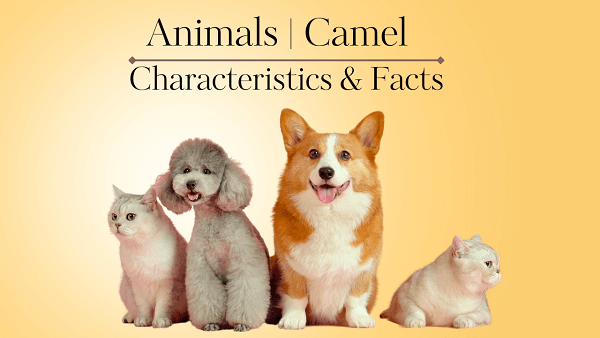
Camel Definition | Characteristics & Facts
Camel Definition
It is known as a hoofed mammal belonging to the Camelidae family. Camels are known for their distinctive humps, long legs, and ability to survive in harsh desert environments.
Camel General Characteristics & Facts
Adaptations for Desert Life
Camels have several adaptations that allow them to survive in the desert. They have humps that store fat, which can be converted into energy and water when food and water are scarce. Their long legs help them walk on sandy terrain, and they have specialized nostrils and eyelashes to protect against blowing sand.
Two Main Species
There are two main species of camels. The dromedary camel (Camelus dromedarius) has a single hump and is native to the Arabian Peninsula, while the Bactrian camel (Camelus bactrianus) has two humps and is found in the colder regions of Central Asia.
Water Conservation
Camels have the ability to conserve water. They can drink large amounts of water at one time and store it in their body tissues. Additionally, they have specialized kidneys that can produce concentrated urine and reduce water loss.
Long Lifespan
They can live for around 40 to 50 years, both in the wild and under human care.
Communication
Camels communicate through various vocalizations, body postures, and facial expressions. They can make sounds like grunts, moans, and hisses to communicate with each other.
Cultural Importance
Camels have been of great cultural and historical significance in many regions. They have been used for transportation, carrying heavy loads, and as a source of milk, meat, and wool. They have played a vital role in the economies and lifestyles of desert-dwelling people for centuries.
Physical Characteristics of Camel
- Humps: The most recognizable feature of camels is their humps. D The humps are actually fatty deposits that serve as energy stores, providing camels with sustenance during times when food and water are scarce.
- Long Legs: Camels have long legs relative to their body size, which helps them navigate through sandy and uneven desert terrain. Their legs are well-suited for walking long distances and have adapted for efficient movement in arid environments.
- Padded Feet: Camels have broad, tough, and thickly padded feet that enable them to walk on hot sand without sinking. Their foot pads act as natural shock absorbers and help distribute their weight over a larger surface area.
- Large Nostrils: Camels have large, flaring nostrils that can be closed to protect against blowing sand and dust. This adaptation helps prevent particles from entering their respiratory system in desert environments with frequent sandstorms.
- Thick Coat: Camels have a thick, shaggy coat that provides insulation and protection from extreme desert temperatures, both cold and hot. The coat reflects sunlight during the day and retains heat during cooler nights.
- Long Eyelashes and Nictitating Membrane: Camels have long, curly eyelashes that shield their eyes from the sun, sand, and dust. Additionally, they possess a transparent third eyelid called the nictitating membrane, which helps protect their eyes while still allowing them to see.
- Prominent Lips: Camels have thick, leathery lips that enable them to eat thorny desert vegetation without injuring themselves. Their lips are also efficient at picking up small food particles.
- Water Storage: Camels have a unique ability to store and conserve water. Their kidneys and urinary system are highly efficient, allowing them to reabsorb water from their urine and limit water loss from their bodies.
Continue To Explore All Animals That Start With C
Scientific Classification of Camel
Kingdom: Animalia (Animals)
Phylum: Chordata (Chordates)
Class: Mammalia (Mammals)
Order: Artiodactyla (Even-toed Ungulates)
Family: Camelidae (Camelids)
Genus: Camelus
Key Locations of Camel
- Egypt
- Morocco
- India
- Australia
- Saudi Arabia
- United Arab Emirates
- Sudan
- Niger
- Kenya
- Mongolia
View All A-Z Animals List
Camel FAQs
What do camels eat?
- Grass
- Leaves
- Thorns
- Bark
- Dates
- Seeds
- Fruits
- Vegetables
- Grains
- Palm fronds

